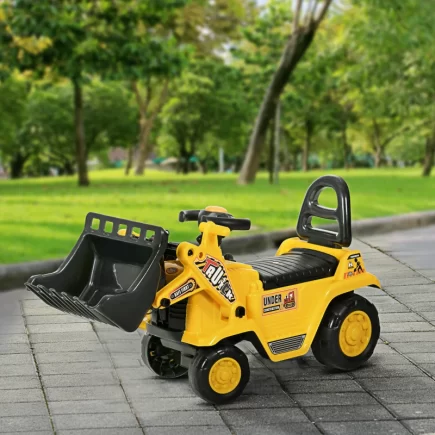A commode chair is a valuable assistive device designed to provide support and comfort for individuals who have difficulty accessing a traditional toilet due to illness, surgery, or disability. Whether someone is recovering from surgery, managing a chronic condition, or experiencing mobility challenges, a commode chair helps them maintain independence and dignity while addressing their basic needs.

Understanding how to properly use a commode chair is essential for ensuring safety, comfort, and hygiene. This guide will walk you through the main steps to help you or other people use a commode chair effectively, from selecting the right model to cleaning and maintenance tips.
1. Choose the Right Commode Chair
When selecting a commode chair, it’s important to consider individual needs and preferences. There are different types of commode chairs, each designed for specific purposes. Here’s a breakdown of the most common types:
- Over-Toilet Commode Chair: This type fits over an existing toilet, providing extra height or support. It is ideal for individuals who can still access the toilet but need added stability or accessibility.
- Wheeled Commode Chair: This model features wheels, making it portable and ideal for people who need to move the chair easily from room to room or between spaces.
- Bedside Commode Chair: This type is typically placed near the bed and is ideal for individuals who cannot move to the bathroom. It comes with a removable pan for easy waste disposal.

Tip: When selecting a commode chair, consider factors such as weight capacity, comfort, mobility, and whether you or other user needs a removable pan for easier cleaning.
2. Ensure Proper Placement of the Chair
Placement is a crucial consideration when setting up the commode chair. Ensure that the chair is positioned in a convenient and accessible location, such as next to the bed or in a room close to the bathroom. The area should be clear of obstacles to prevent accidents while using the chair. If you or other user is using a wheeled commode, ensure the brakes are locked before sitting down to avoid any risk of rolling.

3. Check for Stability
Before sitting on the commode chair, always check its stability. Gently push the chair or shift your or other user’s weight to confirm that the chair is stable and secure. This step is crucial to prevent falls or injury.
Tip: If the chair has adjustable legs or height, make sure they are set to the appropriate position for comfort and safety.
4. Proper Sitting Position
Maintaining the correct posture while using a commode chair is essential for comfort and injury prevention. Sit all the way back on the seat to provide maximum support. Keep your or other user’s feet flat on the floor and maintain a relaxed, upright posture to prevent strain on back.

5. Ensure Privacy and Safety
For individuals using the commode chair in shared spaces, privacy is a key consideration. Use privacy screens or curtains to create a comfortable and discreet environment. If you or other user is in a shared bathroom or bedroom, this will help feel more at ease and maintain dignity.
Adding armrests or side supports to the commode chair can also improve stability and safety, reducing the risk of falls while sitting down or standing up.
6. Using the Commode Chair for Hygiene
The primary function of a commode chair is to provide a safe and hygienic way to urinate and defecate when access to a traditional toilet is not possible. Here’s how to use it effectively:
- Urination: Ensure that you or other user is sitting comfortably on the chair and use a urinal or directly position yourselves over the pan.
- Defecation: When you or other user has completed the business, ensure that the pan or bucket is positioned securely before standing up.

If the chair has a removable pan, carefully remove it after use. Dispose of waste in the toilet or appropriate waste disposal area, and then clean and disinfect the pan thoroughly.
7. Assistive Tools and Modifications
For additional support and comfort, consider using assistive tools and modifications. For example:
- Grab Bars: Installing grab bars near the commode chair can help you or other user sit down and stand up more easily. They also add an extra layer of safety and stability.
- Raised Toilet Seats: If using a commode chair over a toilet, a raised seat can provide additional comfort and accessibility.
- Supportive Cushions: Cushions designed specifically for commode chairs can provide extra comfort for longer periods of use.
Note: Users who need more assistance, modifications like adjustable height or tilt-back chairs can improve comfort and ease of use.
8. Training and Getting Comfortable
Practice with a caregiver or family member until you or other user feel comfortable. They can help adjust the chair settings (height, armrests, etc.) to ensure maximum comfort and ease. Familiarizing with the chair’s features and settings will help the user feel more confident and secure.
9. Handling Emergencies or Accidents
Accidents can happen, and it’s important to be prepared. If you or other user feels weak, faint, or unable to complete the task, it’s crucial to have a caregiver or emergency button nearby for assistance. Similarly, if a spill occurs, clean up immediately to avoid slipping hazards and maintain hygiene.
Enhancing Comfort and Independence with a Commode Chair
Using a Commode Chair can greatly enhance the quality of life for individuals who have difficulty accessing a traditional toilet. By following the steps outlined in this guide, you can ensure that the process is safe, comfortable, and hygienic. Remember, choosing the right chair, maintaining proper posture, ensuring stability, and adhering to cleaning routines are all essential for a positive experience.
FAQs
1. Can a commode chair be used outdoors?
Yes, certain wheeled commode chairs are designed for both indoor and outdoor use. Ensure the wheels are large and durable enough for outdoor surfaces and check for stability on uneven ground. Always lock the brakes before use to prevent movement.
2. What should I do if the commode chair feels unstable?
If the commode chair feels unstable, double-check that it is placed on a flat surface, all legs are properly adjusted, and any brakes on wheeled models are locked. If instability persists, consult the manufacturer or a healthcare professional to ensure the chair is appropriate for your needs.
3. What should I do if the commode chair pan doesn’t fit properly?
If the pan doesn’t fit securely, check the chair’s model and manufacturer specifications to ensure you have the correct size pan. If the issue persists, contact the supplier for a replacement or consult a professional to ensure proper fitment.




























